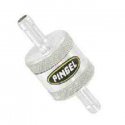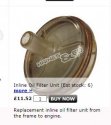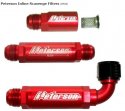Nick McCabe
Husqvarna
A Class
I'm trying to get an understanding of what the hose that hook to the oil drain plug is being used for. I attached the diagram that shows the hose layout. My understanding is the head ventilation hose (#6) attaches to a "manifold" in the frame where there is also a hose going to the airbox (also #6) and then the hose to the oil drain plug (#2). The airbox hose allows clean air to flow into the manifold and into the head. If the head ventilates positively into the manifold, the oil that may be in that air flows downward and returns to the crankcase via hose 6 (fastened to the oil drain plug).
My alternative theory is that the hose from the drain plug allows blowby to travel into the frame/manifold and return to the engine via the hose that hooks onto the head. The airbox hose serves to neutralize air pressure.
In the TC model, the airbox hose is eliminated so there is the hose that hooks to the head and a second hose that goes somewhere else, not to the oil drain plug, since a traditional style is used in this model.
Why is this hose design done in such a quirky and potentialy disasterous manner? Why could the hose not be hooked into another location in the crankcase what would not cause a loss of oil if detached? It seems there must be a reason to hook it to this location or the engineers would not have done it, certainly not after they paid dealers to replace engines under warranty that failed to due the poor design. Does anyone have a good understanding of this? Thanks in advance.
Nick
My alternative theory is that the hose from the drain plug allows blowby to travel into the frame/manifold and return to the engine via the hose that hooks onto the head. The airbox hose serves to neutralize air pressure.
In the TC model, the airbox hose is eliminated so there is the hose that hooks to the head and a second hose that goes somewhere else, not to the oil drain plug, since a traditional style is used in this model.
Why is this hose design done in such a quirky and potentialy disasterous manner? Why could the hose not be hooked into another location in the crankcase what would not cause a loss of oil if detached? It seems there must be a reason to hook it to this location or the engineers would not have done it, certainly not after they paid dealers to replace engines under warranty that failed to due the poor design. Does anyone have a good understanding of this? Thanks in advance.
Nick



